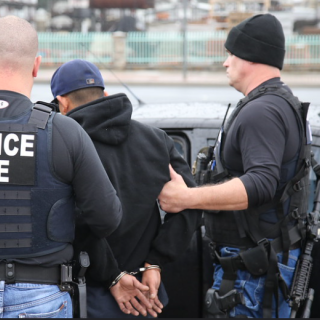A terrible anti-protest bill was introduced in Ohio. Text is here: https://www.legislature.ohio.gov/legislation/legislation-documents?id=GA133-HB-784
Among other things, HB 784:
· Creates steep new penalties for interfering with or blocking traffic during an unpermitted protest.
o Under current law, “hindering or preventing movement” of persons on roads constitutes disorderly conduct, which is generally a minor misdemeanor. The bill would convert this same offense into a 3rd D felony (up to 3 years in prison and $10,000) if it occurs during a protest that did not receive a permit, a protest for which the issued permit was exceeded, or a “riot.”
· Creates new civil and criminal defense for an individual who uses or threatens force, including deadly force, to escape from a “riot.”
o Under the bill, if a person “reasonably believes” they are in danger of imminent bodily harm, they “may take any steps necessary to flee or escape” from a riot, and are “justified in using or threatening to use reasonable force, including deadly force, to escape.” (One can imagine, e.g., a driver claiming such defense after hitting protesters with their car while “fleeing”.)
· Enables police and other “peace officers” to sue protesters and organizational funders/supporters of protests if the officers suffer personal injury or damage to property as a result of a riot.
o The bill broadly provides that organizations are liable for treble damages if they provided “material support or resources” with the purpose to “plan, prepare, carry out, or aid in conduct” by an individual that results in the officer’s injury or property loss. (The provision does not require any intent or knowledge by the organization that the injury or property damage will take place.)
· Heightens the penalty for “riot” and “aggravated riot” if it results in any harm to property or persons.
o In such instances, riot would be a 4th D felony (1.5 years, $5,000) instead of a 1st D misdemeanor; aggravated riot would be a 3rd D felony (3 years, $10,000) instead of a 5th D felony.
· Creates a new offense of “riot vandalism.”
o The offense comprises “recklessly” harming property “owned, leased, or controlled” by a government entity, or a “tomb, monument, gravestone, or other similar structure,” while participating in a riot. The new offense would be a 2nd D felony (8 years in prison and $15,000).
· Creates a new offense of “riot assault.”
o The offense comprises “recklessly” causing harm to another person while participating in a riot, and would be a 5th D felony, or up to a 3rd D felony for harm caused to “peace officers.”
· Creates a new offense of “harassment in a place of public accommodation.”
o The new offense comprises “recklessly” “harassing or intimidating” another person in a place of public accommodation (restaurant, inn, shop, public transit etc.) while engaged in riot, and would be a 1st D misdemeanor (6 months and $1,000).
Like many states, Ohio law broadly defines “riot” as engaging in “disorderly conduct” (also broadly defined) with four or more persons that is intended to commit a misdemeanor; or “to intimidate a public official or employee into taking or refraining from official action, or with purpose to hinder, impede, or obstruct a function of government;” or “to hinder, impede, or obstruct the orderly process of administration or instruction at an educational institution, or to interfere with or disrupt lawful activities carried on at such institution.” The breadth of the underlying riot statute makes the additional penalties and related offenses described above all the more concerning.
Ohio’s legislative session for 2020 formally ends Dec. 31.



